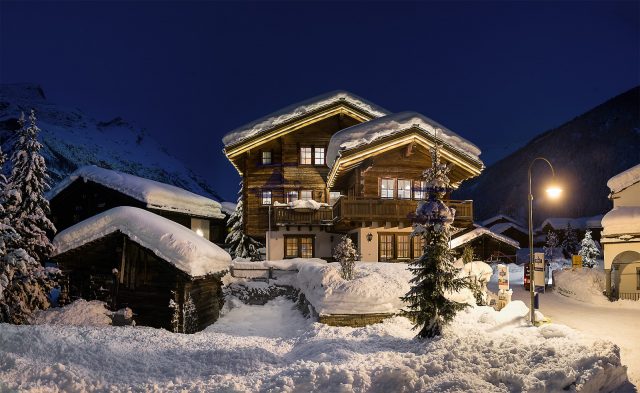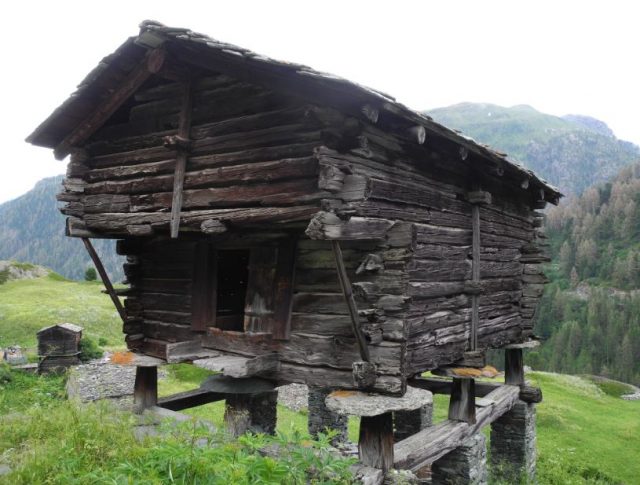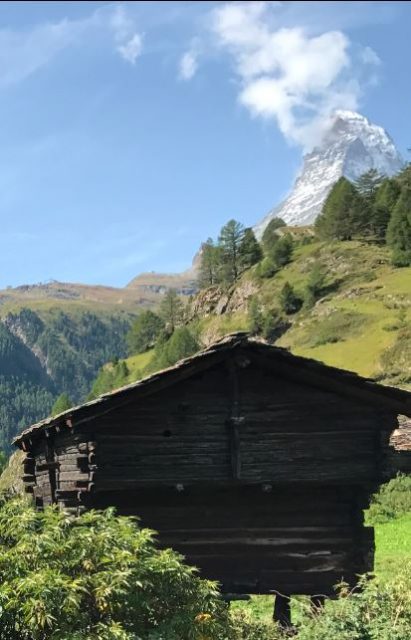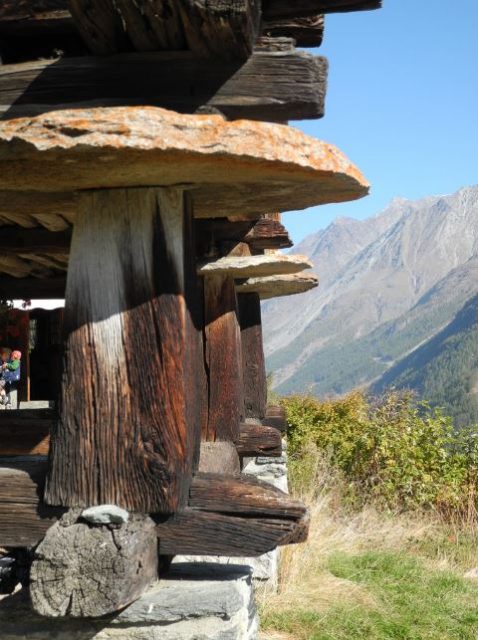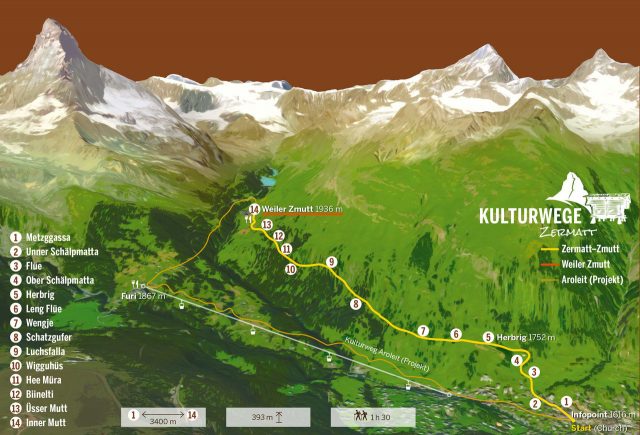No visit to Zermatt is complete without a stroll along ‘Hinterdorf’, the charming historical centre of the resort.
The ancient houses and barns you see there are a key part of the history of this famous Swiss resort. In this post, we look at the origins of these wonderful relics of Zermatt’s agrarian past.
How old are they?
Many of the huts in these narrow alleys and the beautiful hamlets surrounding the town were built as long ago as the 16th century. Specialist tree ring dating has revealed that some date back even further to the 1380s.
What are they made of?
The hills around Zermatt are blessed with forests of larch trees. This wood is particularly resistant to pests and when compressed by the heavy granite roofs compresses creating an extremely sturdy construction.
The reason the timber looks black is due to weathering over the years by the sun, wind, rain and snow. The dark colour also makes it even more effective at absorbing and storing the heat of the sun.
Why are they built on stilts?
We are often asked why some of the ‘stadels’ are built on stilts, and appear to be balanced on huge round stones.
This is because these were once storehouses for the grain that fed the community. The stones that top the supports for each barn stopped vermin from climbing in and kept the grain dry through all seasons.
Explore the ‘Kulturwege’
Some of the best examples of ‘stadels’ can be found in the mountain hamlets of Furi, Zum See, Blatten and Zmutt, now explorable via the resort’s new ‘Culture Trail’.
The ‘Kulturwege’ was created in 2021 as a way to help visitors step back into the Zermatt’s past. A hiking trail developed by the tourist office, it is being extended each year, giving an insight into the years before ‘Zer Matt’ (literally translated as ‘the village by the meadow’) existed and when each hamlet was its own separate community.
Are they still used?
Most of the ‘stadels’ are now empty. Once the railway connection opened in the mid-19th century, linking the small mountain village of Zermatt to the outside world, it became cheaper to buy grain from the valley than produce it locally.
A few are still used for traditional storage. Others have been converted into cosy self-catering chalets.
Accommodation in Zermatt
Matterhorn Chalets offer catered and serviced chalets in Winkelmatten area of Zermatt, where many of these traditional huts still stand.
To book a serviced chalet in Zermatt and to check availability, please contact Ed from Matterhorn Chalets via our website or by calling +41 79 247 15 88
